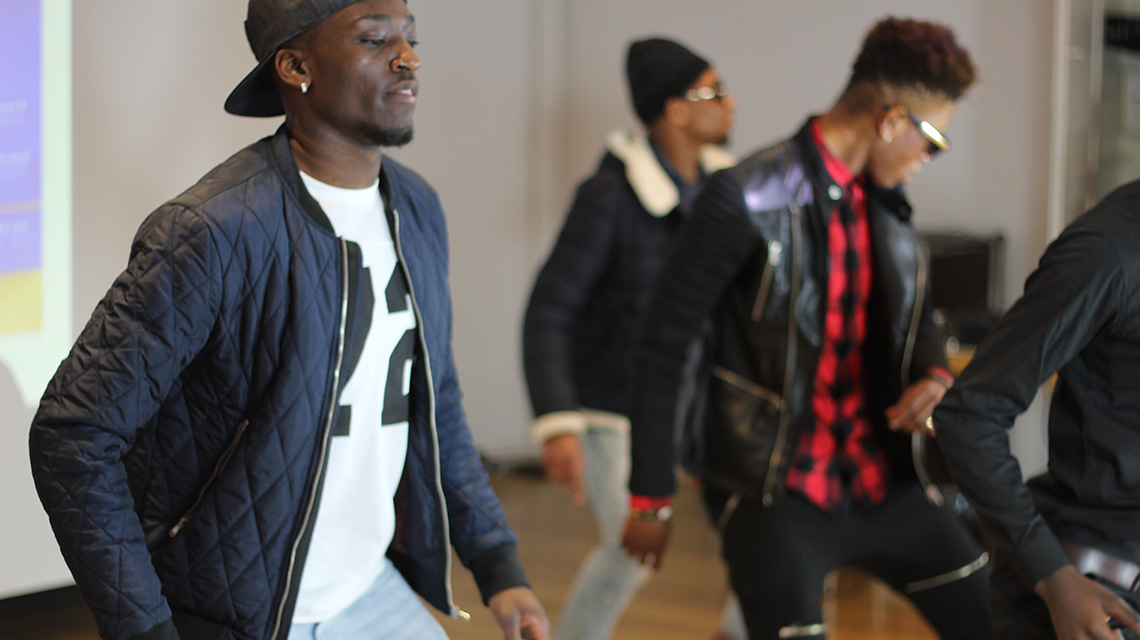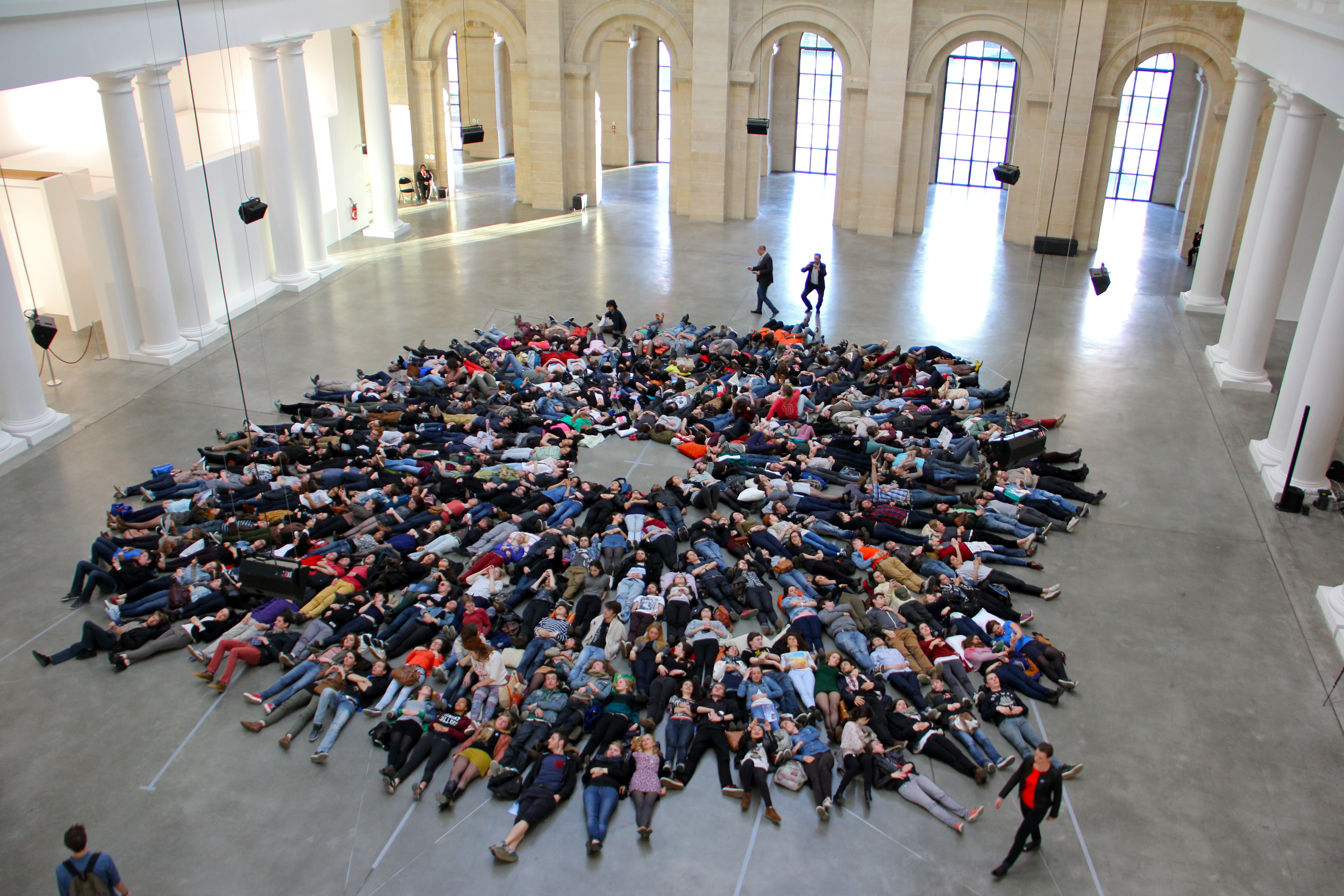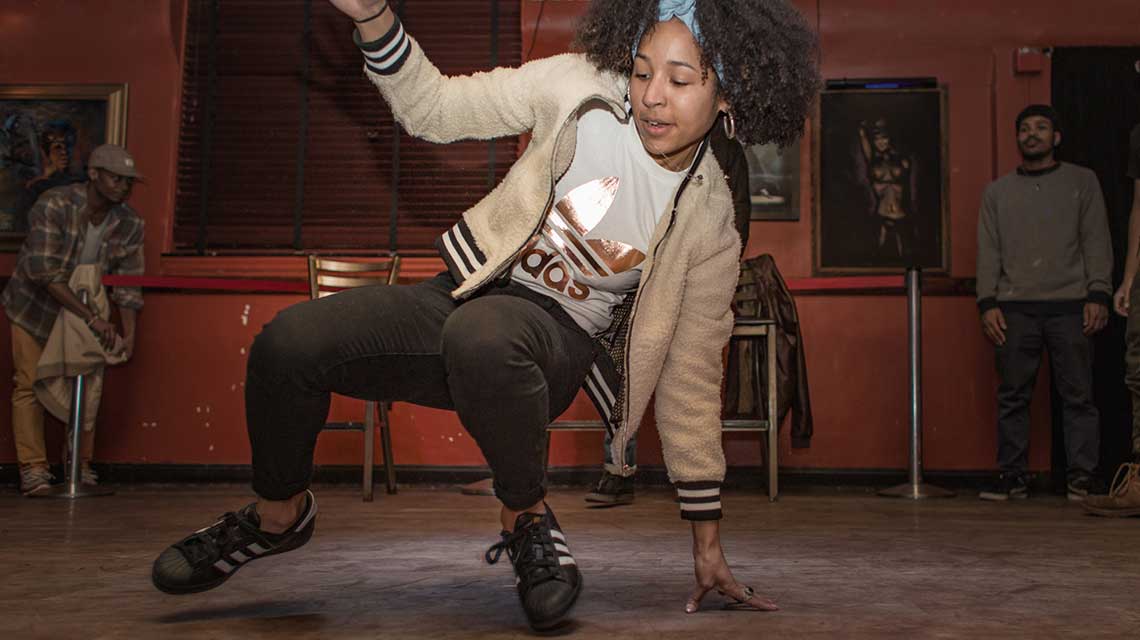This semester I am teaching a course called Dance in Global Contexts, a general education class for non-majors. In the first week I tried to introduce some of the larger ideas and skill sets that will carry out through the term. We talked particularly about colonialism, and about the impact of missionaries and cartesian dualism on the dance practices of colonized populations. One of the dance forms we discussed is Ori Tahiti, the complex of Tahitian dances that originated from pre-contact Tahiti and have since evolved. In addition to the history–it was banned by both English missionaries and the French colonial agents–one of the reasons it is a useful form for introducing this student population to larger concepts about dance is that while men and women perform together, there is some specific gendered movement vocabulary. For women, there is O’tea, circular movement of the pelvic girdle which Cook Island dancers teasingly call ‘the washing machine.’ For men, there is Pa’oti, a scissoring of bent knees from a first position where the knees come together and re-open.
In addition to a full performance, I wanted to show these movements separately, in order to emphasize their difference as well as to help build skill in movement observation. While the focus of this course is not expressly ‘the popular,’ I try to show a range of visual examples, and mostly what is available are modern performances on YouTube. While looking for videos, I found a tutorial for pa’oti, one of several posted by Tahiti Dance Online.https://www.youtube.com/watch?v=dJB74Oijw9c
As I watched, I thought, ‘that song sounds so familiar!’ When the lyrics came in, although softly, I realized it was Belgian singer Stromae’s wildly popular song “Papaoutai.” Stromae, born Paul Van Haver to a Belgian mother and Rwandan father, is a successful dance music artist, well known for integrating diverse sonic influences like American and global hip-hop, Congolese rumba, and Cuban son, as well as for his often challenging lyrics and imagery.* “Papaoutai,” from Stromae’s second album released in summer of 2013 gained global popularity, appearing in the top ten of most European popular music charts, and at number 1 in France and Belgium.
The music video, which echoes the song’s question “Papa, where are you?” features parent-child pairs dancing happily together while Stromae appears as an immobile mannequin to his fictional son. A range of dance forms are presented: Krumper Tight Eyez is the father in a krumping duo, there is a flexing father and son, and two contemporary pairs–two women and another father-son duo. Stromae’s son turfs to get his father’s attention, itself a hybrid form. Together, they freestyle, echoing and re-imaginging the movements of the content pairs he watched. This includes the opening and closing of the legs also seen in Azonto and other afro-diasporic forms.
When I showed the pa’oti video in class, I asked, “does anyone recognize the song?” Only two of fifty students raised their hand. As is so often the case, the United States was largely out of the loop of Stromae’s global popularity. Once they and I had explained the song and who Stromae is, I asked “knowing that, why do you think this song appears in this video?” And a few students were able to work out the connection between the Belgian-Rwandan artist and song and Tahiti’s colonial past. In addition to the popularity and pervasiveness of Stromae’s song in the year the tutorial was made, I can’t help but think there is a little bit of a bilingual wordplay going on, given the sonic similarities between pa’oti and papaoutai.
While the predominant reading of “Papaoutai” is biographical–Van Haver’s father was largely absent while alive, and was a casualty of the Rwandan civil war–I think there is a reading here of the now absent but always present colonial power, father(s) with many children, whose language is left, whose mark on movement is left, a father who played favorites and left fratricide in his wake. And yet through what is on one hand the neocolonialism of global media infrastructure, and on the other the agentive re-mixing and recirculation of meaningful texts, the far-flung ‘brothers’ come together on YouTube.
The official music video for “Papaoutai” has been viewed almost 300 million times on YouTube. While YouTube statistics no longer show the geographic distribution of viewers, we can imagine France, Belgium, and their (post)colonies, all in the dark green of dense viewership, their citizens singing and dancing along.
*His song “Carmen,” and the video for it, is a striking, self-reflexive critique of fame in the Internet age.
** A parody of the song criticizing Algerian president Bouteflika circulated in 2014
–Alexandra Harlig, The Ohio State University




1 thought on “Dancing the Francophone Postcolony on YouTube”
Comments are closed.